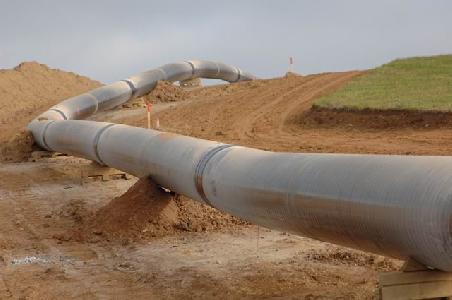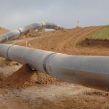
Top European Officials in Azerbaijan and Turkmenistan Promote Nabucco (Part Two)
Publication: Eurasia Daily Monitor Volume: 8 Issue: 8
By:

Stakeholders in Nabucco and other Southern Corridor pipeline consortiums, as well as Shah Deniz project stakeholders in Azerbaijan, the European Commission, and many observers consider that investment decisions are a must in the first half of 2011.
If finalized at this juncture, the investment decisions would enable the start of construction work on Nabucco in 2012, and the launch of Phase Two of production at Shah Deniz also in that year. These parallel developments could put Shah Deniz gas into the first stage of the Nabucco pipeline to Europe by 2016. Shah Deniz production is expected to reach 16 billion cubic meters (bcm) annually after 2017. Nabucco’s second stage is planned at 31 bcm per year, in anticipation of gas volumes from Turkmenistan and the Kurdish region of northern Iraq.
The unprecedented joint visit of European Commission President, Jose Manuel Barroso, and EU Energy Commissioner, Guenther Oettinger, to Azerbaijan and Turkmenistan, sought to encourage those final investment decisions, as well as a Turkmenistan Azerbaijan linkup.
Investment for Shah Deniz Phase Two is currently estimated at some $25 billion by the project consortium. An additional $3 billion investment is envisaged to expand the capacity of the South Caucasus Pipeline by adding a parallel line. This pipeline runs from Baku to the Georgian-Turkish border, carrying mainly the production from Phase One of the Shah Deniz project. The project consortium and the pipeline consortium are each led by BP and they overlap in membership. The South Caucasus Pipeline connects with Turkey’s gas transmission network at Erzurum presently; but is intended to link up via a feeder to the Nabucco pipeline, at the latter’s inception point on Turkish territory.
According to BP Azerbaijan President, Rashid Javanshir, the pipeline’s capacity should be raised from the existing 10 bcm per year to 24 bcm from 2017 onward, in anticipation of Shah Deniz Phase Two and other inputs, apparently from Turkmenistan (Trend Capital, November 30, 2010). The start of South Caucasus Pipeline’s capacity expansion needs to be synchronized with a supply and transit agreement for Turkmen gas.
Shah Deniz Phase Two is planned to extract 16 bcm per year from 2017 onward, at least 6 bcm of which are pre-committed for sale to Turkey. This would leave a maximum of 10 bcm per year available for Southern Corridor pipelines to Europe from Shah Deniz. Offshore gas reserves allow further production increases, but Baku takes the long-term view in planning its gas extraction rates. Those 10 bcm are available in the time-frame of Nabucco’s first stage. However, the Southern Corridor includes two additional pipeline projects: the Interconnector Turkey-Greece-Italy (ITGI) and the Trans‑Adriatic Pipeline (TAP, on a route partly overlapping with ITGI’s), with their respective gas-trading consortiums.
Although far less developed than the Nabucco project, and lacking Nabucco’s strategic value to Europe, the ITGI and TAP are business projects in their own right. As such they compete to buy and ship Shah Deniz Phase Two gas. Lack of access to Turkmen gas (thus far) and the investment decisions drawing closer, generate a contest over Phase Two of Shah Deniz production.
The State Oil Company of Azerbaijan (SOCAR) handles the negotiations with each one of the three consortiums on behalf of Shah Deniz partners. SOCAR’s Vice-President, Elshad Nassirov, recently outlined Baku’s interests and concerns in a widely noticed interview (European Energy Review, November 16, 2010). Five points stand out:
1. Azerbaijan will not “put all its eggs in one basket” (the Southern Corridor).
2. Baku will compare the purchase prices and transportation terms and tariffs offered by each consortium within the planned Southern Corridor.
3. Baku will only proceed with the Shah Deniz Phase Two investment decision, if and when a pipeline outlet from Turkey to Europe is guaranteed to materialize. Without this, Azerbaijani gas might remain locked inside the Turkish market.
4. Once the pipeline to Europe is built, Azerbaijan would not subsidize its operation if the line is utilized significantly below capacity. Partial use would increase gas transportation costs per unit of volume, hurting Azerbaijan’s competitive position or forcing it to cover the cost difference. This point is understood to refer to Nabucco.
5. A crucial point again concerning Nabucco –subsidizing below-capacity use of the pipeline could remove the incentive to procure gas from Turkmenistan. For its part, Azerbaijan aspires to a dual role, as supplier in its own right and transit country for Turkmen gas, via the Nabucco project to Europe.




